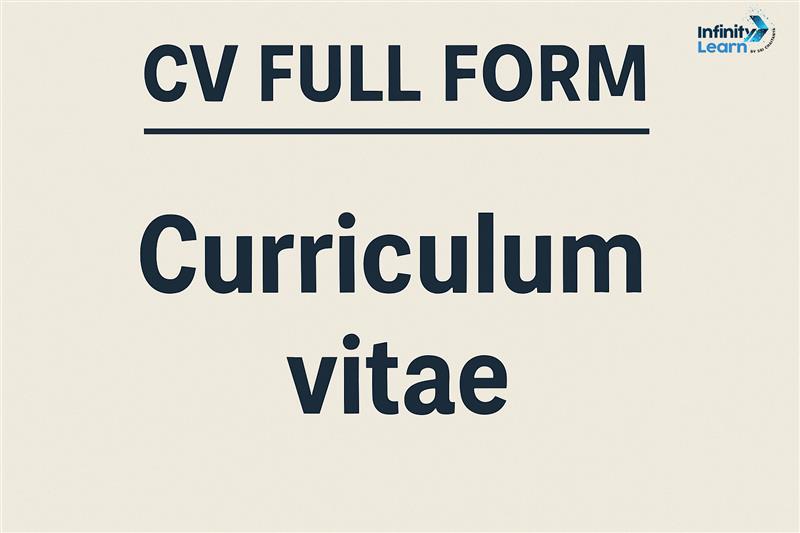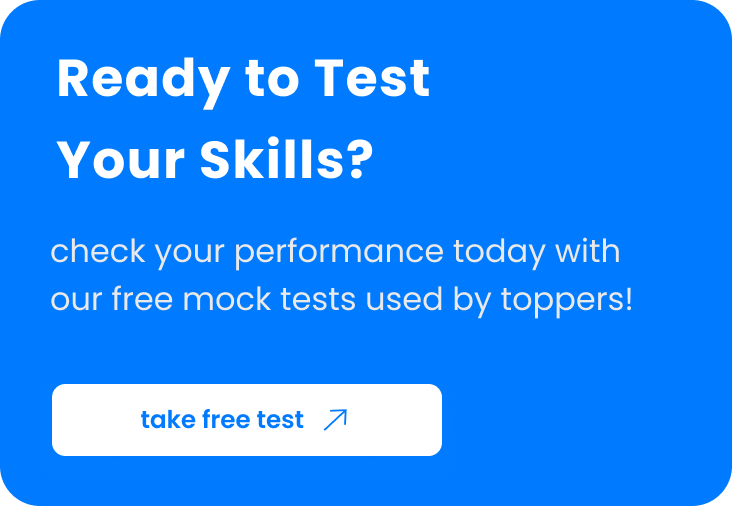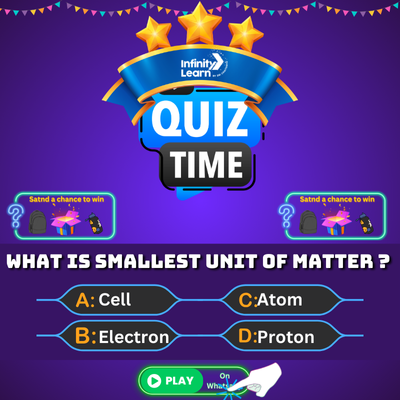Table of Contents
A CV summarises your experience and qualifications needed for career opportunities. It works similarly to a resume in the United States. In many countries, employers review the CV first to screen job applicants. They often use it to decide who moves forward to the interview stage.

CV Full Form
CV stands for Curriculum Vitae, which is just a fancy way of saying a detailed summary of your personal and professional journey. It’s more than just a list of jobs; it gives a full picture of who you are, what you’ve studied, the work you’ve done, and what you have achieved over time. A good CV usually includes your name, contact details, educational qualifications, work experience and hobbies.
Do Check: ISBN Full Form
Why Do We Need a CV?
A CV is your personal marketing document for a job. It helps employers understand your background and skills at a glance. A CV increases your chances of getting shortlisted and landing interviews for a job or academic opportunities.
- A CV shows your education, certificates, and key skills. It helps employers see if you fit the job.
- It also lists your past jobs and what you did in each role. This lets hiring managers understand your experience.
- A good CV gives a strong first impression. It shows that you care about presenting yourself well.
- It helps you stand out by showing what makes you different from others.
- When you match your CV with your career goals, it becomes easier to grow in the field you want.
Difference Between a CV and Resume
A CV and a resume are both used for job applications, but they have in lot of factors. Knowing more about these differences helps you choose the right format for your career goals.
| CV | Resume |
| A CV is usually 2 or more pages long and includes detailed academic and career history. | A resume is typically 1 page and provides a quick summary of your skills and work. |
| Used mainly for academic, research, or teaching roles. | Commonly used for private-sector, business, or non-academic job applications. |
| Includes full details of education, publications, research, and achievements. | Focuses on relevant skills, experiences, and accomplishments tailored to the job. |
| Structured in chronological order and rarely changes across applications. | A flexible format that can be customised for different job roles. |
| More common in Europe, Asia, and for academic jobs globally. | Widely used in the U.S. and Canada for non-academic positions. |
Points to Remember While Designing a CV
Creating a well-structured CV is your first step toward getting noticed by recruiters. Follow these important points to make your CV stand out.
- Use clear headings, readable fonts, and proper spacing. A neat layout helps recruiters find information quickly.
- Write short bullet points instead of long paragraphs. This makes your skills and achievements easy to scan.
- Customise your CV to match the job description. Highlight only the skills and experience relevant to the role.
- Place recent jobs, qualifications, or achievements at the top. This helps recruiters see your strongest points right away.
- Write in a formal tone and avoid using casual language or slang to keep your CV professional.
- Limit your CV to 1–2 pages and include only what’s necessary for the job you’re applying for.
- Proofread your CV carefully. Mistakes can make you look careless or unprofessional.
- Start sentences with words like “led,” “managed,” “created,” or “improved” to show what you accomplished.
- Always include your current phone number and email address so recruiters can contact you easily.
Do Check: ABG Full Form
Types of CV
A CV changes based on its purpose. While all CVs highlight your experience and skills, the format and content depend on whether you’re applying for a job in the industry or a role in academia.
CV for Job Applications
This type of CV is for people who want to work in companies or the private sector. It focuses on your job experience, useful skills, and what you have done in the past. Employers look for clear, direct information that matches the role. Keep this CV short; one or two pages is enough. Show the most important parts of your work. Use words that show action, like “lead,” “solve,” “manage,” or “create.” Also, change your CV slightly for each job. This helps the employer see that you are the right fit.
CV for Academics
This CV is for people who want to work in teaching or research. It focuses more on your education, research projects, publications, and academic work. It is much longer than a job CV because it includes more information. Add sections like your thesis title, research papers, conferences, grants, and awards. Academic CVs must follow a clear format, and they should be crisp but informative.
Features of a Resume and CV
Both a CV and a Resume help you apply for jobs, but they serve different purposes. A CV gives a full record of your academic and professional background, while a resume offers a brief summary focused on a specific job role or industry.
CV
- A CV gives a full picture of your education, work experience, and achievements.
- It often goes beyond two pages, especially if you have many qualifications or a long career.
- This type of document works best for jobs in research, teaching, or academia where the employer needs detailed information.
- Your CV lists what you have done, usually starting with the most recent work or study first.
- You don’t need to change your CV often. Just update it when you complete a new course, get a promotion, or take on a new role.
Resume
- A resume highlights your most relevant experience, skills, and achievements for a specific job.
- Most resumes are one page, especially for early or mid-career professionals.
- You should tailor your resume for every job application.
- A resume focuses more on skills and results than just listing job roles.
- It fits best in corporate, private sector, or industry-related job applications.
Do Check: TBT Full Form
How to Write a CV?
Writing a good CV helps you make a strong first impression when applying for jobs. A clear CV shows your skills, experience, and education in a professional way. Here is a simple step-by-step guide:
1. Add Your Contact Details
Begin your CV with your full name, phone number, email address, and the city or town you live in. Give online links for your LinkedIn profile or online portfolio.
2. Write a Short Personal Introduction
Write 2 to 3 short lines about yourself. Say what kind of work you do and how you can help in the job you are applying for.
3. Add Your Work Experience
List your jobs starting with the most recent one. Write the job title, company name, and how long you worked there. Use bullet points to show what you did and what you achieved in each role.
4. Share Your Education
Write about your studies, starting from the latest qualification. In this section, also mention the course name, college or school name, and the batch year.
5. List Your Skills
Write the skills that match the job you want. Include both technical skills and soft skills.
6. Add Courses or Projects (If Any)
List down all the extra courses, certifications or projects that you have worked on. It shows that you are eager to learn and grow.
Do Check: ACC Full Form
FAQs on CV Full Form
What is a CV in a job?
A CV is a detailed document that shows your education, work history, skills, and achievements for job applications.
What is a CV vs. resume?
A CV gives a complete career overview, while a resume highlights key skills and experience relevant to a specific job.
Does CV mean biodata?
A CV is more detailed than biodata, which mainly includes personal details, while a CV covers qualifications and professional experience too.








